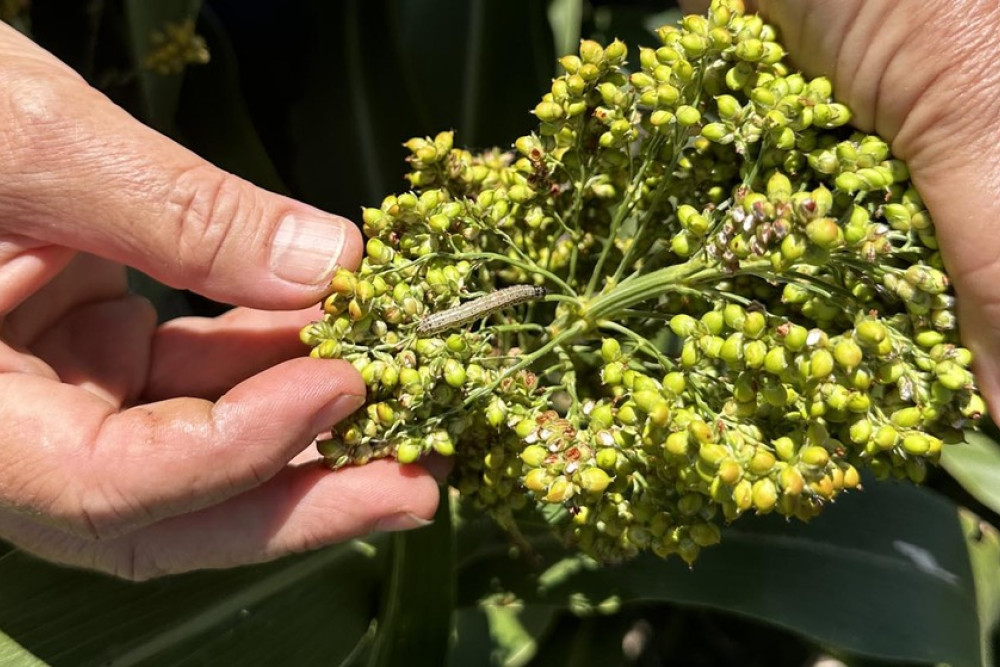Agricultural
22 February, 2024
Fall armyworm detected in sorghum crop
Troublesome pest fall armyworm (FAW) has been detected in crops as close as the Western Downs, in unprecedented levels, causing what experts predict could be the most significant impact on sorghum since the pest’s arrival in Australia in 2020.

Grains Research & Development Corporation (GRDC) Northern Crop Protection Manager Michael Thompson said he has heard FAW has been found west of Dalby, extending out towards Dulacca, and also of a report around Goondiwindi.
Queensland Department of Agriculture and Fisheries (DAF) principal entomologist Melina Miles urged growers to be alert, but not alarmed and take a considered approach to making decisions about the need for control.
“We know that FAW can be devastating and we’re seeing significant crop damage in southern and Central Queensland in sorghum,” Dr Miles said.
“We understand that the level of damage in crops this year is causing concern amongst growers, but I encourage them to work with their advisers to accurately assess FAW infestations before taking action.”
Dr Miles’ work is part of a Grains Research and Development Corporation and DAF research project aimed at developing FAW economic thresholds and management guidelines for sorghum and maize.
Dr Miles attributes the high activity this season to an early start to the FAW activity in spring resulting in higher summer populations.
“In many regions, rain in December has meant later crops, resulting in the coincidence of high FAW activity and susceptible crops. It is also possible that the weather systems associated with the recent cyclones has facilitated the movement of large FAW populations into central Queensland,” Dr Miles said.
“We’re in the early stages of developing robust management recommendations for this pest and research is ongoing, but what we do know is that FAW populations build up between October and March.
“Where they can, growers are adopting an early-sowing strategy to largely avoid severe damage, and this has been effective in 2021-23.”
For information about identification and registered chemical control options, growers should contact local advisers and visit the GRDC Fall armyworm webpage.


